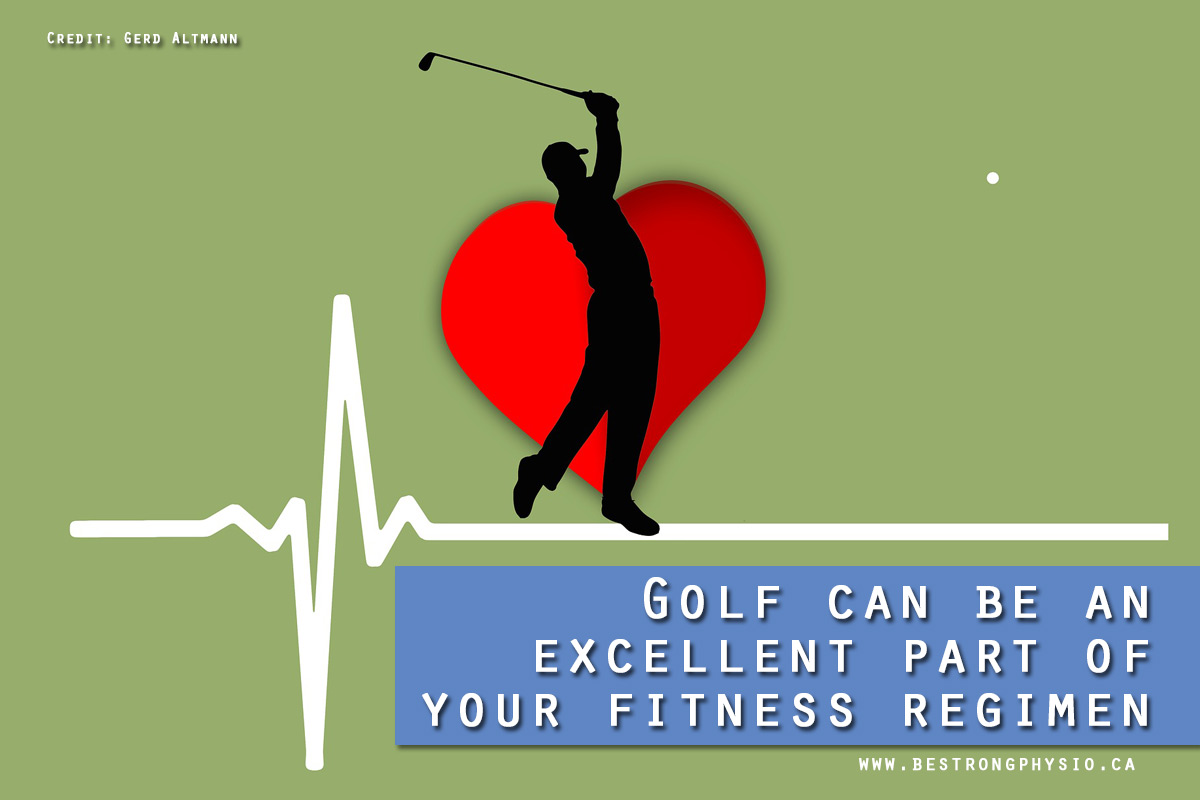The Best Stretches to Get Ready for Golf Season
Golfing is an exciting and engaging sport that can occasionally cause aches, pains, and injuries. Preparation is vital for your technique and to protect your body from harm. For some, that means conditioning your body before the season starts. For others, it means seeking sports physiotherapy services in Toronto. To get the most out of your swing, incorporate both conditioning and physiotherapy into your pre-season routine.
Common Injuries from Golfing
Golfers don’t often worry about concussions, like rugby players, or missing teeth, like hockey players. However, there are common golf injuries you can avoid if you properly prepare your body. Just ask Tiger Woods; this golfing pro has had dozens of treatments, surgeries, and procedures to repair his body from golf injuries. Your game may not be as intense as Tiger’s, but you’re still at risk for many of the same aches and pains.

- 1. Tendonitis of the Wrists
Tendons are the fibrous tissues that hold the muscles to the bones. They’re made from collagen which makes them stretchy and flexible. Overuse of the tendons can cause the tendons to become irritated and inflamed. Golfers often experience tendonitis in the wrists because they repeatedly use the same motions. Tendonitis can become chronic when left untreated. It can make properly holding your club difficult and, in some cases, impossible. You may feel exhaustion in your wrists after a few swings and need to take a break. There is often soreness and dull pain in the wrist area.
- 2. Medial Meniscus Tear
The meniscus is a piece of cartilage in the kneecap that absorbs shock. When swinging the club, it’s common for the hips and femur to stabilize while the knee rotates. Any golf enthusiast will tell you that putting all the rotation pressure on your knees is not good news. Keeping the knees flexible aids a full follow-through in your hips and trunk to disperse the load evenly. If you don’t have flexibility, you will likely develop knee stress, pain, and eventually a meniscus tear. This can be very painful and put a hindrance on your green time.
- 3. Rotator Cuff Injury
Each shoulder joint is stabilized by the four muscles that make up the rotator cuff. These muscles can get injured from overuse or improper rotation. Rotator cuff injuries are common among avid golfers. It may begin as a dull pain or soreness in the shoulder; over time it’ll grow into a sharper pain or spasm when you try to move your shoulder. The muscles swell when inflamed, pinching the nerves between the bones. Since this pain decreases your range of motion, a full swing becomes incredibly painful.

Benefits of Stretching for Golfers
You can be sure that every professional golfer continues to train in the off-season. Stretching is a huge component of effective training, in-season and out. Doing stretches on the days you’ll be on the green only isn’t enough, however. To see a real improvement in your technique and skills, you need to stretch every day, all year.
Stretching for just 10 minutes a day, every day, can significantly impact your golf game. The more flexible you are, the wider the range of motion you will have. Your follow-through on every swing will be smoother and more consistent. Plus flexible tendons and muscles help prevent common golf injuries like those listed above.
Golfing comes with lots of carrying. If you carry your golf bag around the course yourself, you may start to notice back tension or even pain. Consider buying a golf bag that stands open on its own to reduce bending over. Alternately, find a bag that has dual straps for carrying on your back. Most golf bags have only the one strap, which puts all the load on one side of your back. Dual straps disperse the weight evenly, thus reducing back pain.

The Best Stretches for Golfers
Integrate stretching into your daily morning routine. Not only will it prep you for golf season, but you’ll be less injury-prone in general. Remember, stretching may feel tense, uncomfortable, or dull. It should not be painful. If you feel pain, slowly reverse out of the position.
The key to getting a good stretch is holding the position where you feel the muscle resisting, but without pain. Avoid pushing your stretch as far as you can; work on feeling and holding the stretch. As you continue with your daily stretching practice, your flexibility will improve, and you’ll be able to go deeper into the movement.
- Hip Flexor Stretch: Start in a lunge position and let your back knee gently drop to the floor. Press your hips forward and lift your arms above your head. You should feel the stretch across the hip flexor of the leg that is behind you. Breathe deeply into the stretch for 30 seconds. If it feels good, hold it a bit longer. Then, switch legs and stretch out the other hip.
- Knee Stretches: To stretch the top of the knee as well as your quads, start by standing with your feet hip-width apart. Lift one foot and bend the knee behind you, gently holding the foot with your hand. While balancing on the standing foot, gently pull your bent leg foot closer to the body. You should feel it in the top of your knee and front of your thigh. Hold for 30 seconds, then switch legs.
To stretch the back of your knees, start by standing with your feet hip-width apart. Step one foot forward about 1-2 feet. Slightly bend the back leg while keeping the front leg straight. Place your hands on the bent knee for support. You should feel the muscle behind your straight leg pulling slightly. Hold the position for 30 seconds, and then switch legs. - Shoulder Stretch: Stand an arm’s length away from a wall. Place your palms on the wall and your feet just over hip-width apart. Bending at the hips, slowly plunge forward keeping your palms gently pressed against the wall. Your chest and torso should be moving towards the base of the wall. This stretch is terrific for your shoulders and rotator cuff. Take note of where you feel the stretch the most, and hold it there for 30 seconds.
- Wrist Stretches: Kneel on the floor or a mat and set your rear down on the backs of your feet. Place your palms on the floor in front of your knees with your fingers pointing towards your knees. This will stretch the underside of your wrists and forearms. Don’t worry if you can’t place your full palms down in this position at first. With practice, your flexibility will improve.
To stretch the other side of your wrists and forearms, bend one arm at the elbow to 90 degrees so that the wrist drapes downward. Using your other hand, gently push the bent hand towards that elbow, increasing the bend on the wrist. Hold for 30 seconds, then switch to the other wrist.

When to See a Physiotherapist
If any of these stretches cause severe or consistent pain, ask your doctor about the need for physiotherapy. A physiotherapist will assess your joints and muscles for injury. They may also evaluate how you stretch and your golfing form, to identify possible injuries. If you do have an injury, the physiotherapist will provide ongoing treatment to help your body heal properly. They can also work on performance enhancement, injury prevention, and safety advice for all types of sports.

Be Strong Physiotherapy in Toronto offers expert sports physiotherapy services to help you play your best. The owner and lead physiotherapist has ample experience in the golfing world, participating in amateur and professional tournaments. Our licensed RMTs, chiropractors, and physiotherapists can help you get back on the greens after an injury. To book an appointment, send us a message or call the office today: (416) 792-6440.





